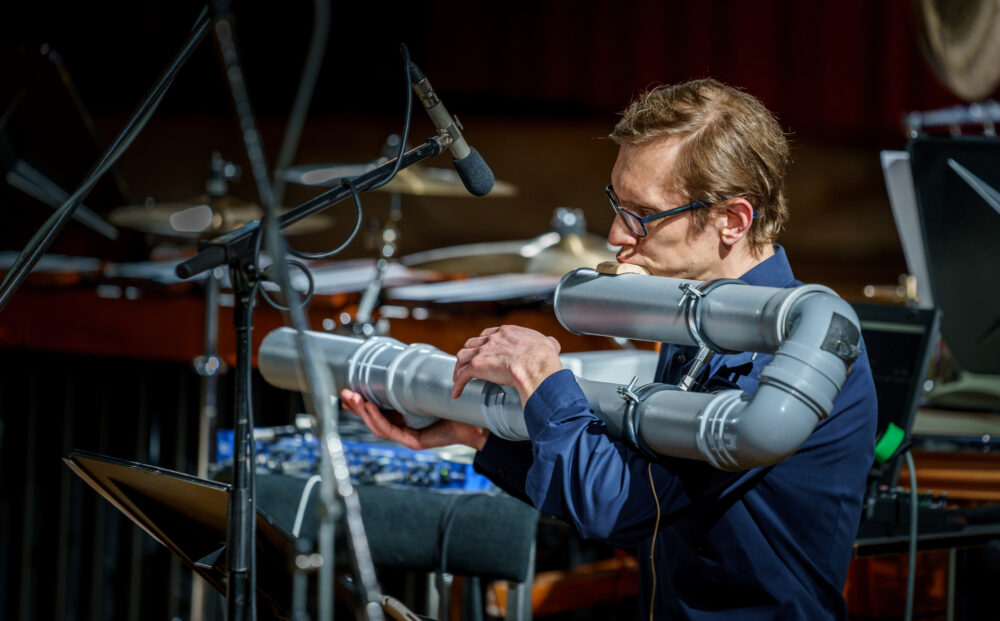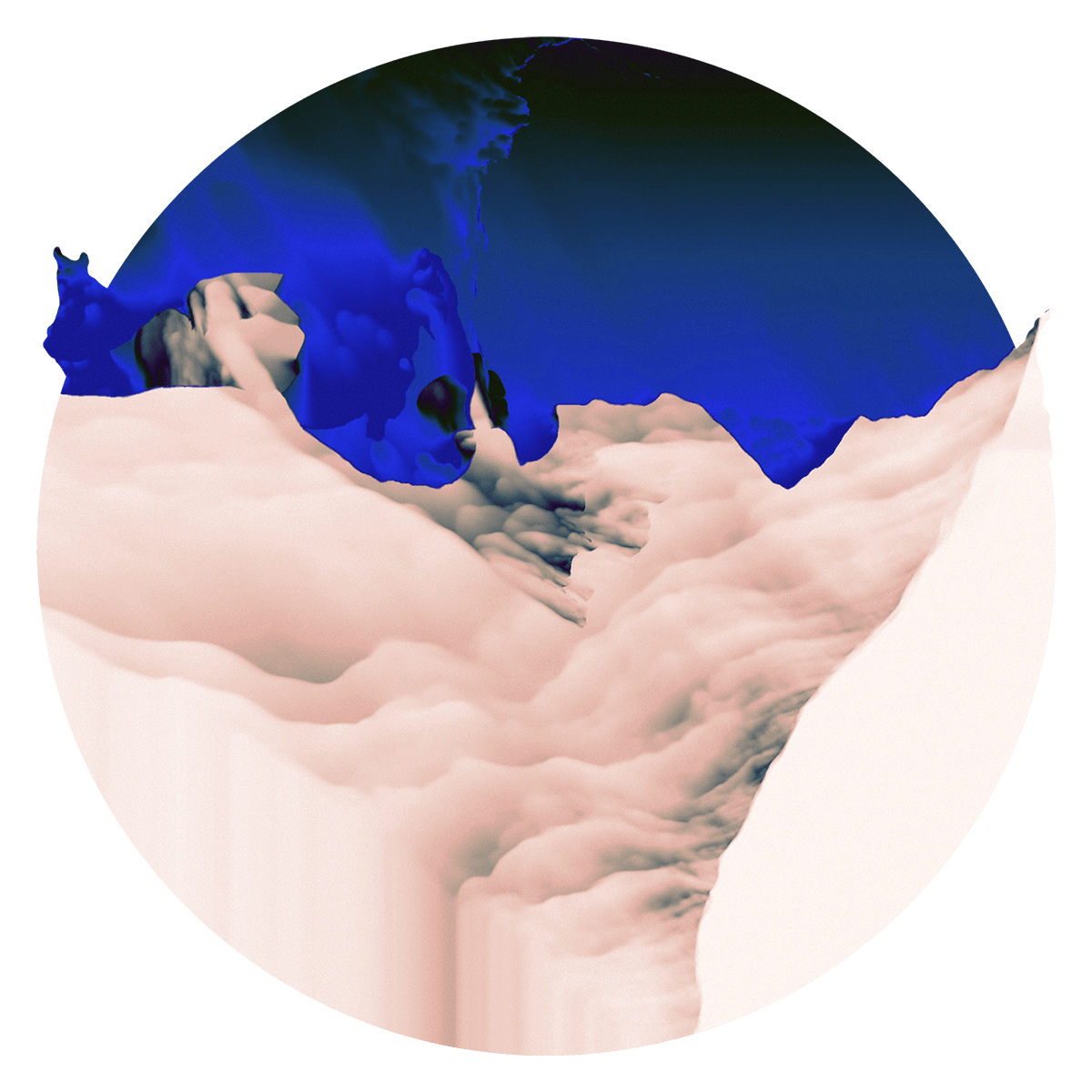
19:00 – 20:00
Tarmo Johannes (flute, horn)
Tammo Sumera (electronics, video projection)
Krista Mölder (visual design)
WHAT? WHY? HOW?
Mari Vihmand – Swirl (2002)
Tristan Murail – Unanswered Questions (1995)
Tarmo Johannes – Franz Strauss – Five Etudes (2021)
Preparation for Yi Jing Jitterbug Solocte
Udo Kasemets – Yi Jing Jitterbug Soloctet (1984)
The virtuoso solo piece Swirl (2002) for flute is based on the acoustic tone row, in which the overtones serve as a starting point. However, they are more than just technique: the natural tones achieved by overblowing return and mark, for example, the beginning of the fading final part. The initially wide radius of the current narrows in the curse of time – until becoming a trill or the chromatic circling around a note. Large and small whirls are contrasted with calm in which the motions eventually disappear. This piece is written for Mihkel Peäske. (Anu Schaper)
Unanswered questions shares the solo flute from Ethers, but the sober, intimist character inferred by its intention – in other times, the piece would have been entitled Tombeau de Dominique Troncin – renders the presence of other instruments superfluous. In vain one might seek a reference to the work with a similar title by Charles Ives, and these questions remaining unanswered find a musical characterisation in the “modest, unfinished melodies” stemming from the flute harmonics.
(Text Pierre Rigaudière, from Tristan Murail home page)
Franz Strauss – Five Etudes (2021) for natural horn and electronics. Tarmo Johannes: “I created this piece in the summer of 2021, when Erik Alalooga invited me to play at the summer experimental music event Little Patarei Tussovka. I had recently started to study natural horn as a new hobby. Considering Erik Alalooga’s penchant for rather harsh sounds, I wanted to combine a beginner’s attempt to play Franz Strauss’s horn etudes with an electronic arrangement that, according to a certain algorithm, occasionally runs mercilessly over the horn’s triads. At the same time, I have contrasted the somewhat annoying regularity of the etudes with the unpredictability of the arrangement.”
Yi Jing Jitterbug Soloctet. “Inspired by John Cage, the Chinese Book of Changes (I Ching or Yi Jing) has an important place in Udo Kasemets’s oeuvre. Kasemets was fascinated both by the mathematical beauty and the ancient wisdom of the I Ching: for millennia, the divination system has enabled people to communicate with the world. The Yi Jing predictions are based on hexagrams of six lines which in turn can be subdivided into lower and upper trigrams. There are a total of eight possible trigrams (hence the “octet” in the title) and 64 combinations between them. Yi Jing Jitterbug is a series of works where a similar principle applies in different ways. Kasemets has matched the trigrams with different musical elements, playing patterns and other parameters. There are 64 different variations of each piece.
Jitterbug is a term used by the American mathematician and engineer Buckminster Fuller to describe his equilateral shape-changing geometric constructions with a mathematical model very similar to the Yi Jing.
Soloctet (1984) was written for solo instrument and eight recording devices (originally cassette recorders), which record and play back the soloist’s performance according to a certain system.
According to the score, before the performance, the oracle of the Yi Jing is to be consulted: a hexagram is to be drawn up using coins, straws of yarrow, or other method; a corresponding prediction is to be read out, a performance plan is to be drawn up according to the lower and upper trigrams, and a piece consisting of 2 x 8 musical units is to be presented focusing on the text and the specific musical material.”
Tarmo Johannes is a flautist and a multi-talented musician who mainly performs contemporary music. He has given numerous concerts with solo flute, flute and electronic repertoire; he is also founder of various ensembles. In recent years Tarmo Johannes has been actively involved in sound synthesis and programming. Sometimes he drives his loved ones crazy by asking seemingly absurd questions starting with “I wonder what would happen if …?” Questions and questioning are also at the heart of the present programme.
